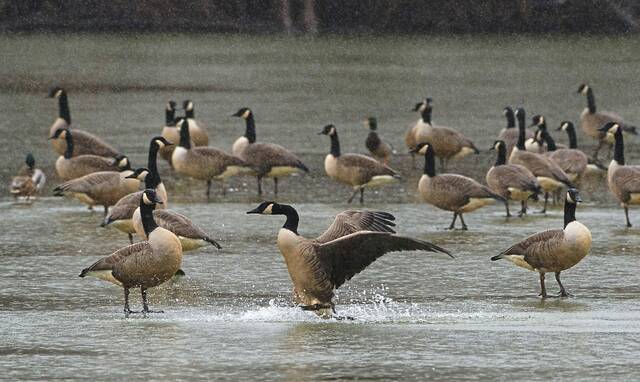Pa. hunting seasons for smallest, largest game birds to start Sept. 1
Pennsylvania’s 2022-23 hunting seasons will get underway Thursday with the openings days for birds that rank among the smallest and largest game birds, respectively: the mourning dove and the Canada goose.
The mourning dove weighs in a bit heavier than 4 ounces, while an adult male Canada goose can tip the scales around 14 pounds.
The two species are among the most common in Pennsylvania and across North America. The mourning dove population is estimated at 350 million, with more than 20 million harvested by hunters each year. The Canada goose population is estimated at 4 million, with about 2 million harvested each year.
Pennsylvania hunters harvest more than 100,000 of each species annually.
Given their abundance, both species have some of the most liberal seasons of any hunted species in Pennsylvania.
Dove season runs from Sept. 1-Nov. 25 and Dec. 21-Jan. 7, with a daily limit of 15 birds and a possession limit of 45.
The early Canada goose season runs Sept. 1 to Sept. 24 across most of the state with a daily limit of eight and a possession limit of 24, except in the areas around the Pennsylvania Game Commission’s Middle Creek and Pymatuning wildlife management areas. The early season is the same around Middle Creek, but the limits are reduced to one daily and three possession. The early season around Pymatuning is Sept. 1 to Sept. 10, with a daily limit of one and a possession limit of three.
A few years ago, the commission launched managed dove fields, where sunflowers are planted to attract the birds for the hunters. There are more than three dozen of the fields on state game lands across the state.
The commission describes managed dove fields as “typically located within an agricultural landscape from which to draw large numbers of birds. Field size should be a minimum of 5 acres, with optimal size reaching 20 acres. Fields should be long and rectangular shaped to maximize the number of hunters and promote safety. Fields should be close to available management equipment, near adequate parking with easy access, and in an area that will not negatively impact waterfowl hunting.
There are six primary habitat considerations when making a successful managed dove field:
- Food - Seeds ranging from annual forbs to agricultural crops.
- Bare Ground - Open dirt beneath food for easy access.
- Grit - Small bits of stone or aggregate to assist with digestion.
- Water - Easy access to surface water (puddles, ponds, streams).
- Loafing - Daytime resting areas (utility lines, standing dead trees).
- Roosting - Nighttime safety in conifer trees.”
Hunters pursuing the fast-flying doves — as fast as 55 miles per hour — tend to miss more birds than they hit and generally go afield with an abundance of shotgun shells, but habitat attracting large numbers can assist hunters, as can dove’s penchant for flocking. Decoys also can bring doves into shooting range, and doves are one of the species for which electronic decoys are permitted in Pennsylvania. The others are waterfowl and crows.
Remove the ads from your TribLIVE reading experience but still support the journalists who create the content with TribLIVE Ad-Free.

